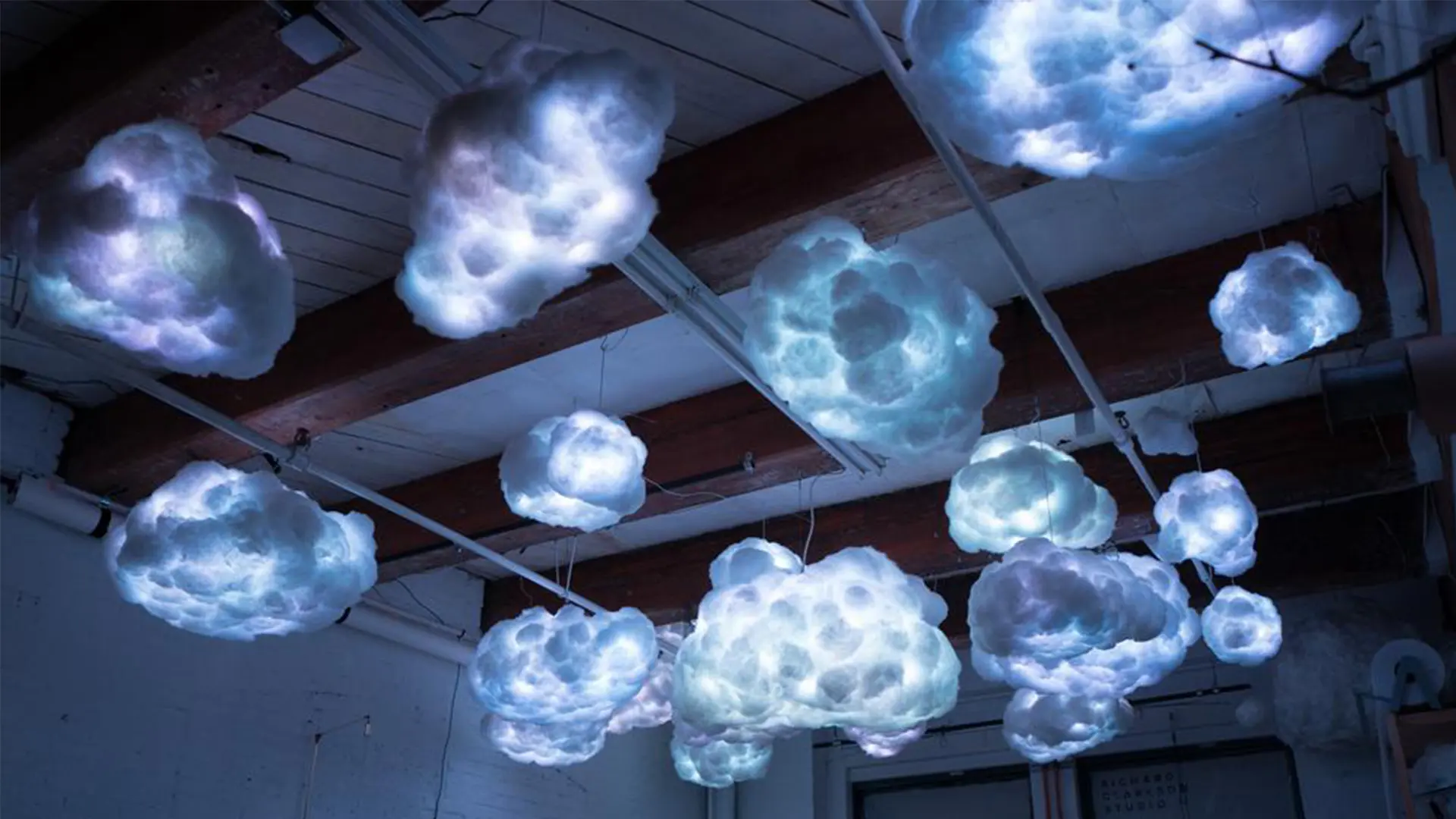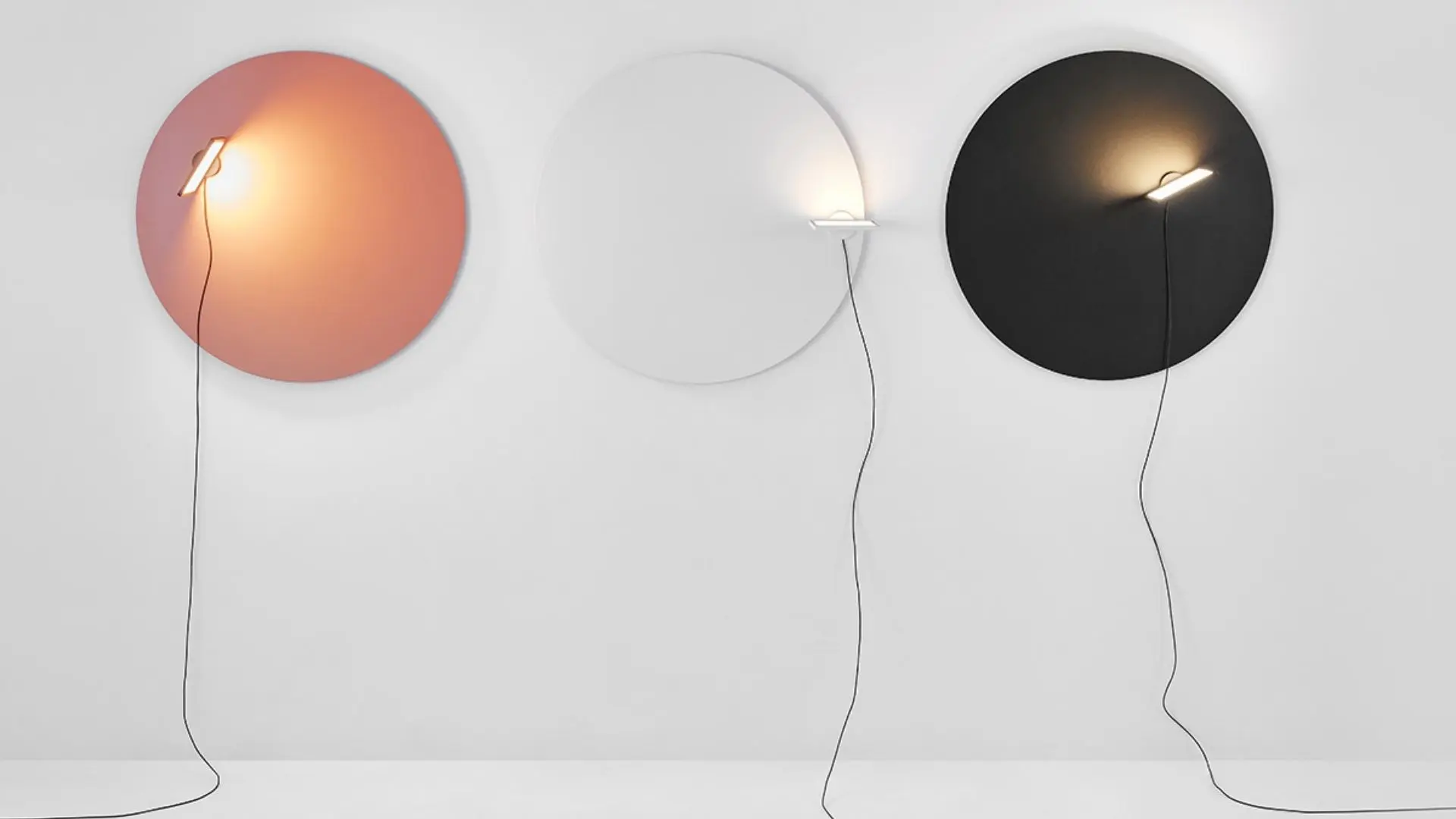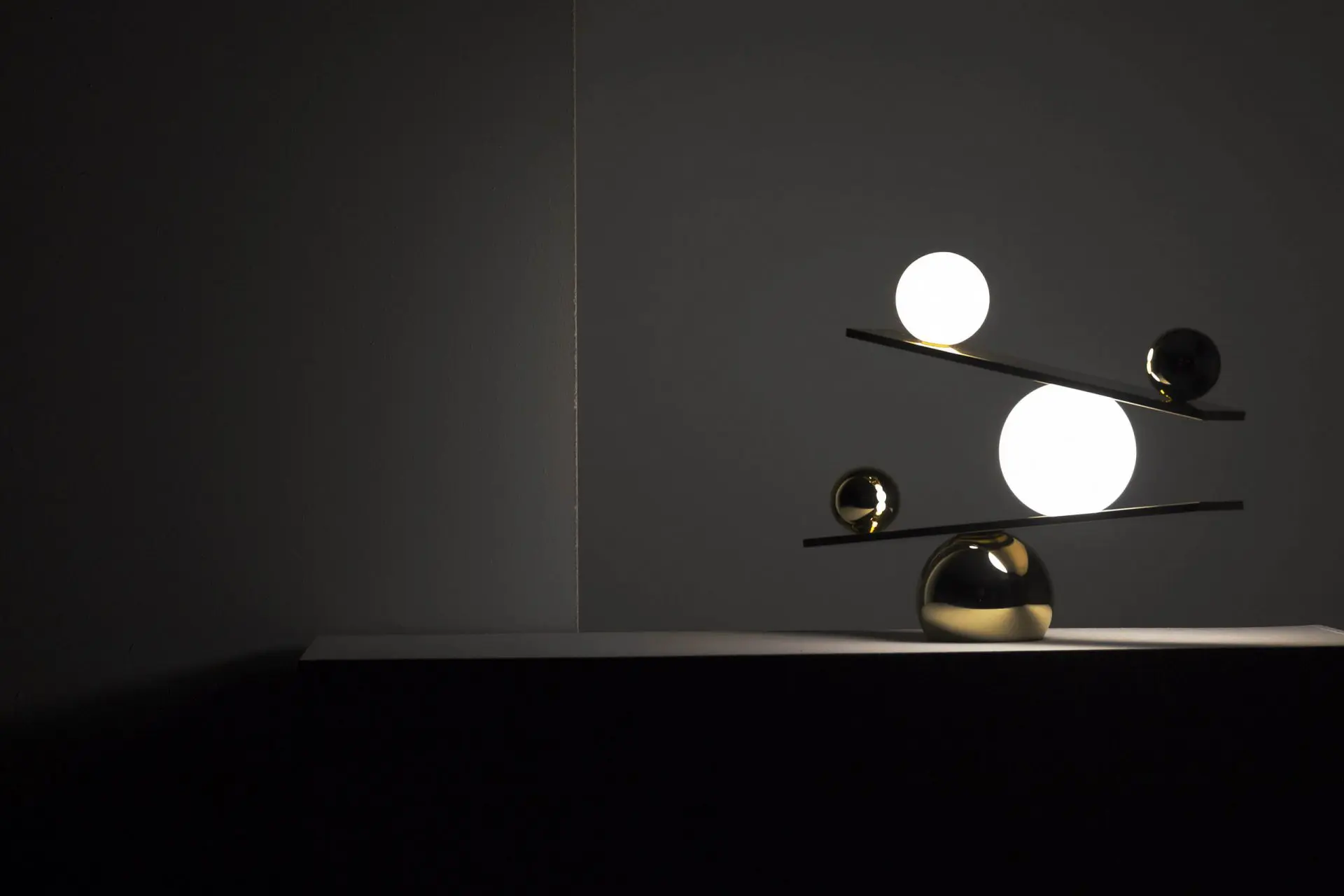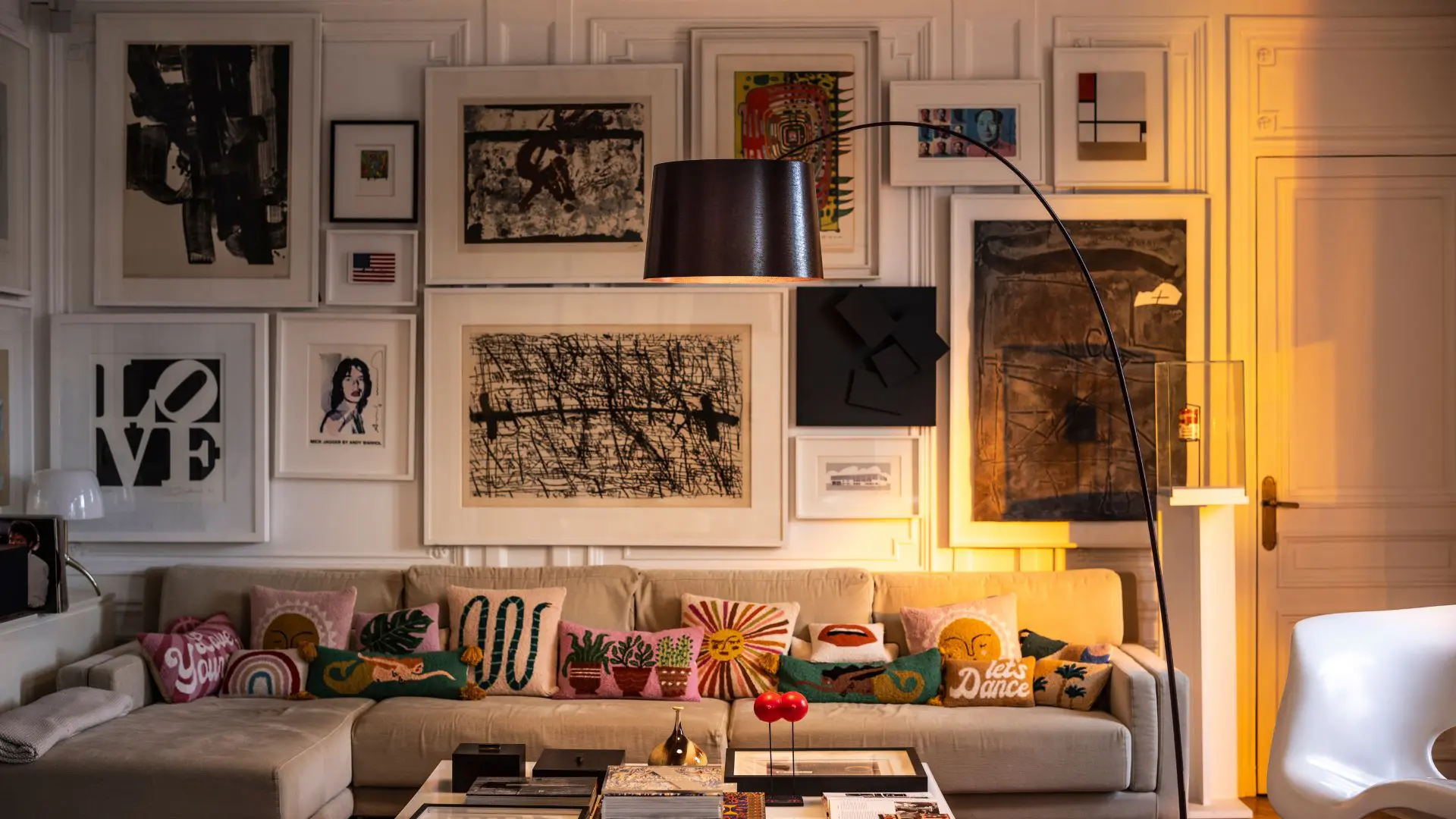Milan MuseoCity 2023: explore the theme of light across 110 museums
From March 3 to March 5, 2023, Milan transforms into a unique, large distributed museum thanks to the coordinated opening of over 100 public and private museums, large and small, of art, history, science and design
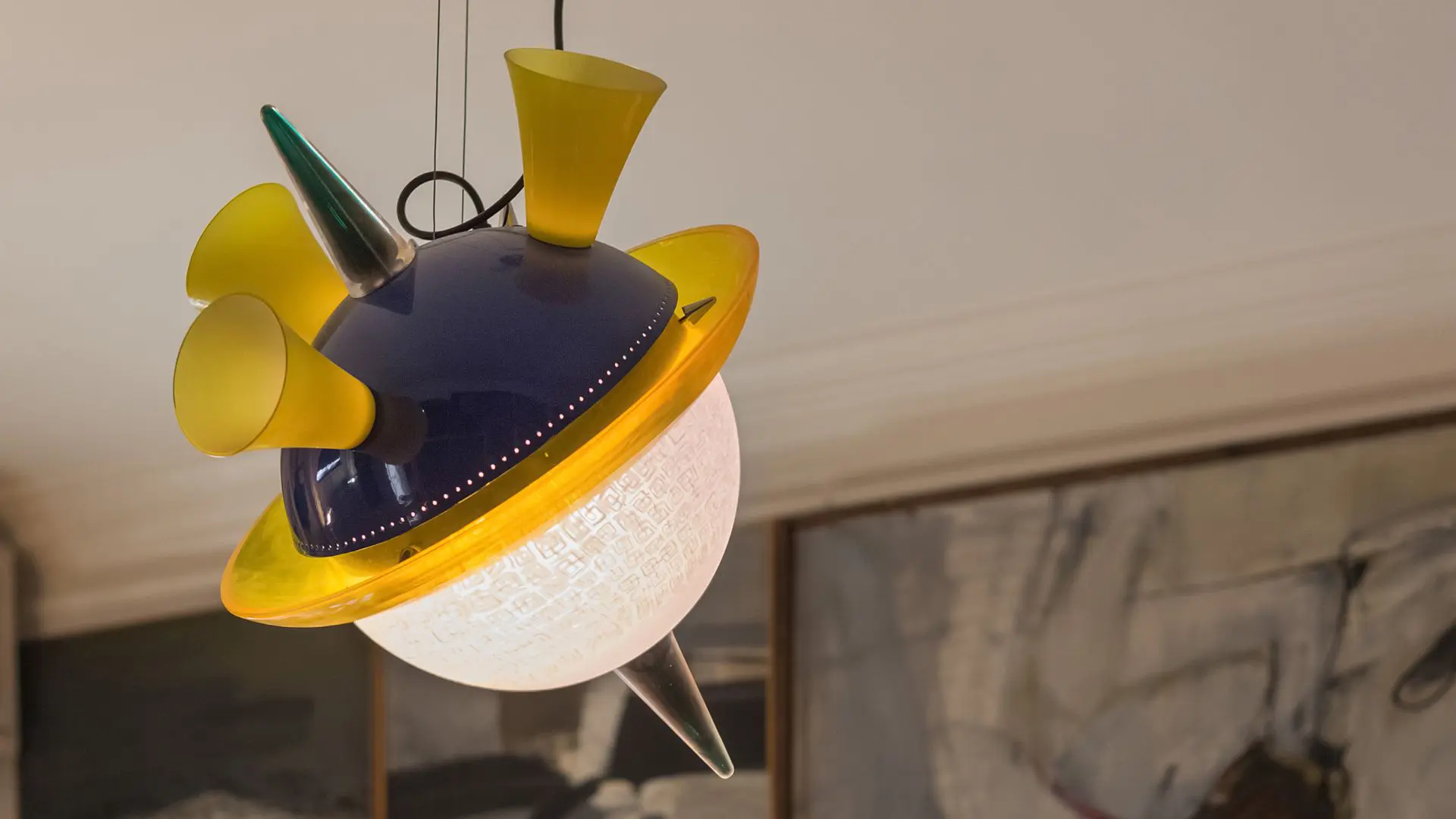
The chosen theme by Milano MuseoCity for the new 2023 edition is “La luce dei Musei” (Museums’ light), explored by participating institutions from multiple perspectives – artistic, photographic, scientific, design, and others – highlighting one of the strengths of the event: its interdisciplinary nature and the ability to capture the interest of a wide audience, in the name of Culture.
Stories about lighting tools – from ancient lanterns and candlesticks to designer lamps -, light rendering in paintings, light installations, studies, and technological discoveries, restorations, and new lighting systems capable of enhancing artifacts, where light is seen as a passion and hope is fueled by art.
For the occasion, DesignWanted – as a media partner of the initiative – has put together a selection of 8 projects not to be missed, where light is the protagonist in all its forms and functions. Keep reading to find out more.
1. Associazione Giancarlo Iliprandi
Giancarlo Iliprandi began his collaboration with Stilnovo in 1967. In 1969, he was commissioned to design the new brand, for which he was inspired by the stylization of a switch. A series of sketches show the design phases that transformed the initial formal stimulus into the company logo, which was then applied to the company’s coordinated image.
This is a particularly long-lasting logo as it is still in use today. During his collaboration with Stilnovo, in 1969, he also designed a lamp: the Spirale, an aluminum sheet wrapped in a way that evokes a natural element.
This aspect is highlighted by the still life of the lamp outdoors – probably a photo of Iliprandi himself – published in the first issue of Abitare in 1970:
“An aluminum sheet, wrapped in a “spiral” in a dynamic form that enhances the expansion of light: Giancarlo Iliprandi designed this lamp for Stilnovo, fully exploiting the reflection characteristics of the material. The edges are protected by a black rubber profile, the base is square with a side of 25 cm, the height is 70 cm.” (from “Abitare” n. 82, January-February 1970)
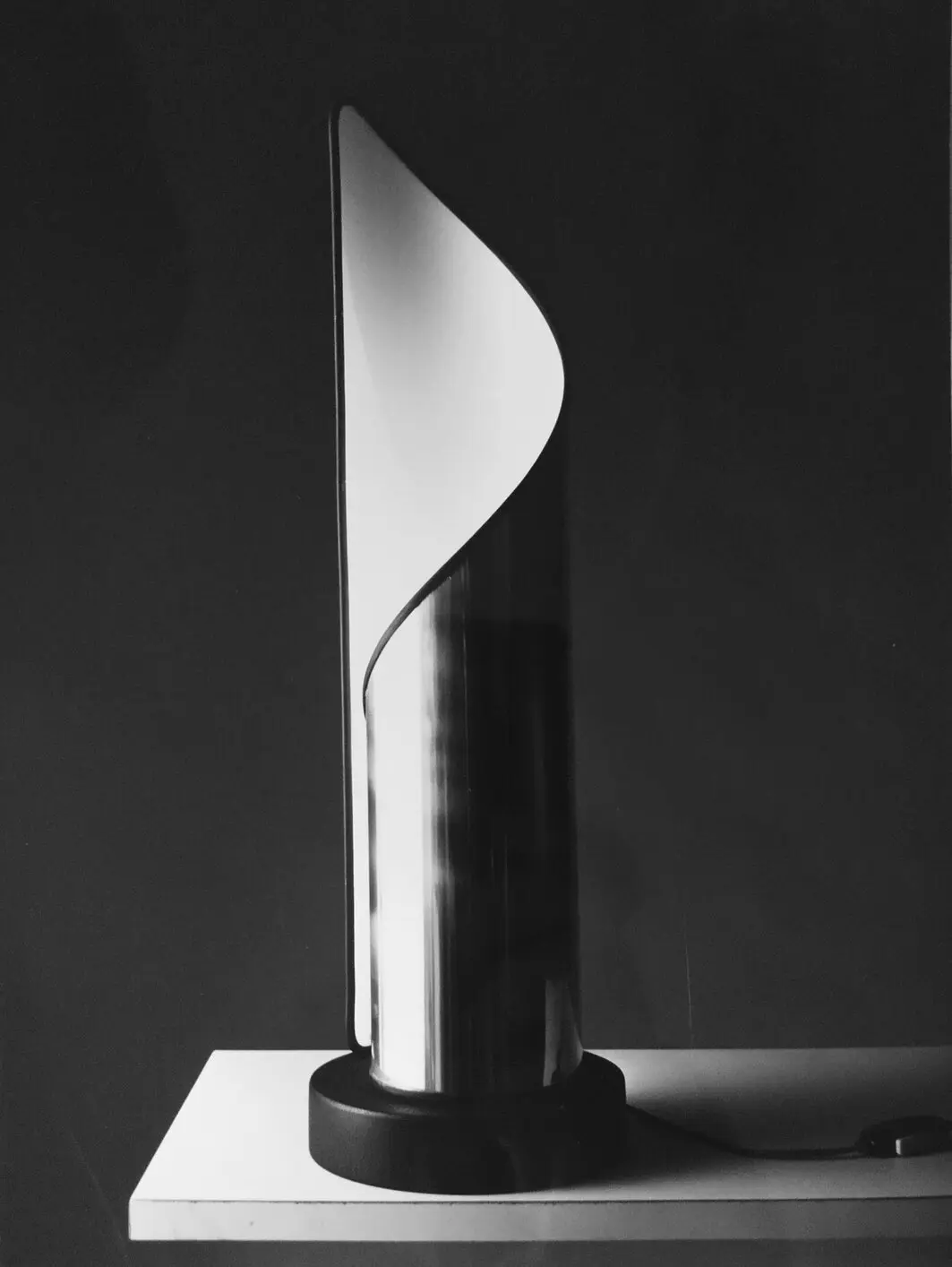
2. Casa Museo Boschi Di Stefano
Most of the chandeliers at Casa Museo Boschi Di Stefano were acquired by the Boschi Di Stefano Foundation for the museum’s opening in 2003, as well as the majority of furnishings that contribute to strengthening the aspect of the house and its spirit, evoking an era in harmony with the exhibited works.
The last room of Casa Museo was originally Antonio Boschi and Marieda Di Stefano’s bedroom. Today, it is dedicated to the works of the ‘Movimento Informale’ and Piero Manzoni, and is furnished with a dining room designed by the architect Gino Levi Montalcini.
The Agena pendant lamp, from the Galassia collection, produced in 1993 by Venini and designed by the internationally renowned architect and designer Alessandro Mendini (1931-2019), hangs from the ceiling.
It was donated by Mendini himself on the occasion of the Casa Museo’s opening. Mendini was the nephew of Antonio Boschi and Marieda Di Stefano and a resident of the building on Via Jan 15. Agena is a pendant lamp named after a rocket and, in its form, refers to celestial bodies and planets: it is a globe divided into two parts by a yellow ring.
One part is midnight blue, decorated with small holes and three yellow cones that diffuse light, while the other is milk white, embellished with geometric murrine. Two emerald green tips complete the ensemble, evoking an axis of rotation.

3. Officina Rancilio 1926
Designed in the mid-1950s and produced in 1957, the Ducale is the last coffee machine for bars made by the founder, Roberto Rancilio, who died in 1956 and never saw its realization.
Massive and imposing, the Ducale features a square and rigid structure. With this machine, the renovation of the line and functionality begins: for the realization of the aesthetic part, Roberto Rancilio wants the collaboration of a famous architect from Parabiago, Giovanni Travasa.
For the first time, technique and aesthetics are divided into specific competencies, it is the first step toward the conception of design. The architect Travasa, who will collaborate with the Rancilio family for several years, decides to use a material that was a symbol of modernity for the time: plastic.
The Ducale is the first machine to use plastic components, allowing for various plays of light and colors. Placed on the bar counter, the light inside the blue plastic front panel created a luminous effect, amplified by the entire square and shiny structure of the machine.
The Ducale was an important sign of that era, so much so that it was present in an invitation postcard from 1956 and still remembered today as a reliable machine with great performance. The name “Rancilio” is written in lowercase cursive in white on a blue field, accompanied by an abstract motif composed of 3 irregular triangles of red, yellow, and purple, serving as a counterbalance to the brand.
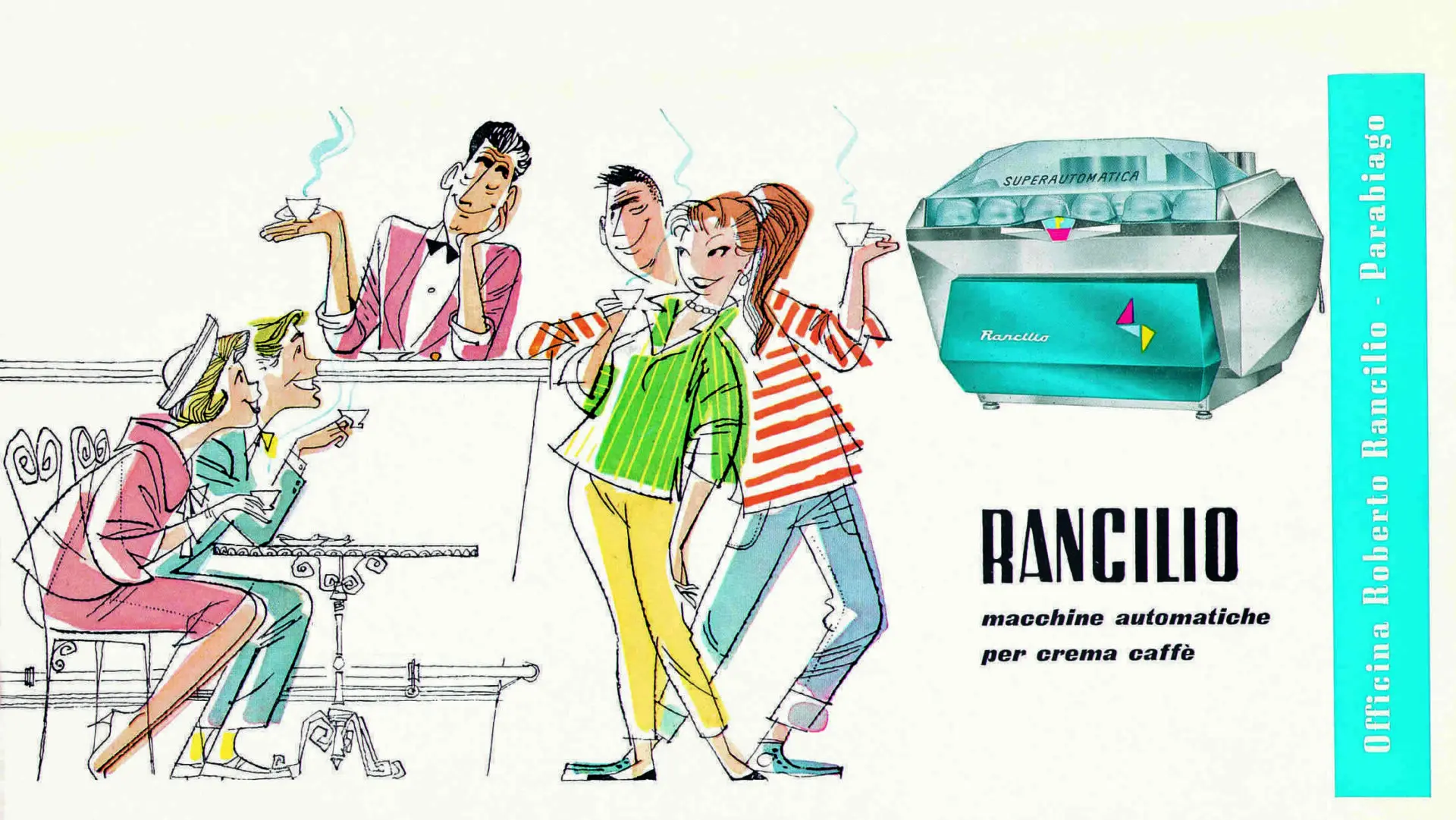
4. Museo Storico Alfa Romeo
The Alfa Romeo DNA is depicted through a suggestive light installation that vertically crosses the Museum building: lights, words, and style signs that activate in a show with a descending helical movement.
The DNA’s luminous cylinder connects all areas of the Museum, encompassing its different “souls”: car names tell the story of the brand, graphic signs depict style and beauty, and the lights’ chase represents the dynamism of speed.
Timeline, Beauty, and Speed are, in fact, the three sections in which the Alfa Romeo Museum is organized. Designed by the Alfa Romeo Style Center, the DNA was created by iGuzzini.
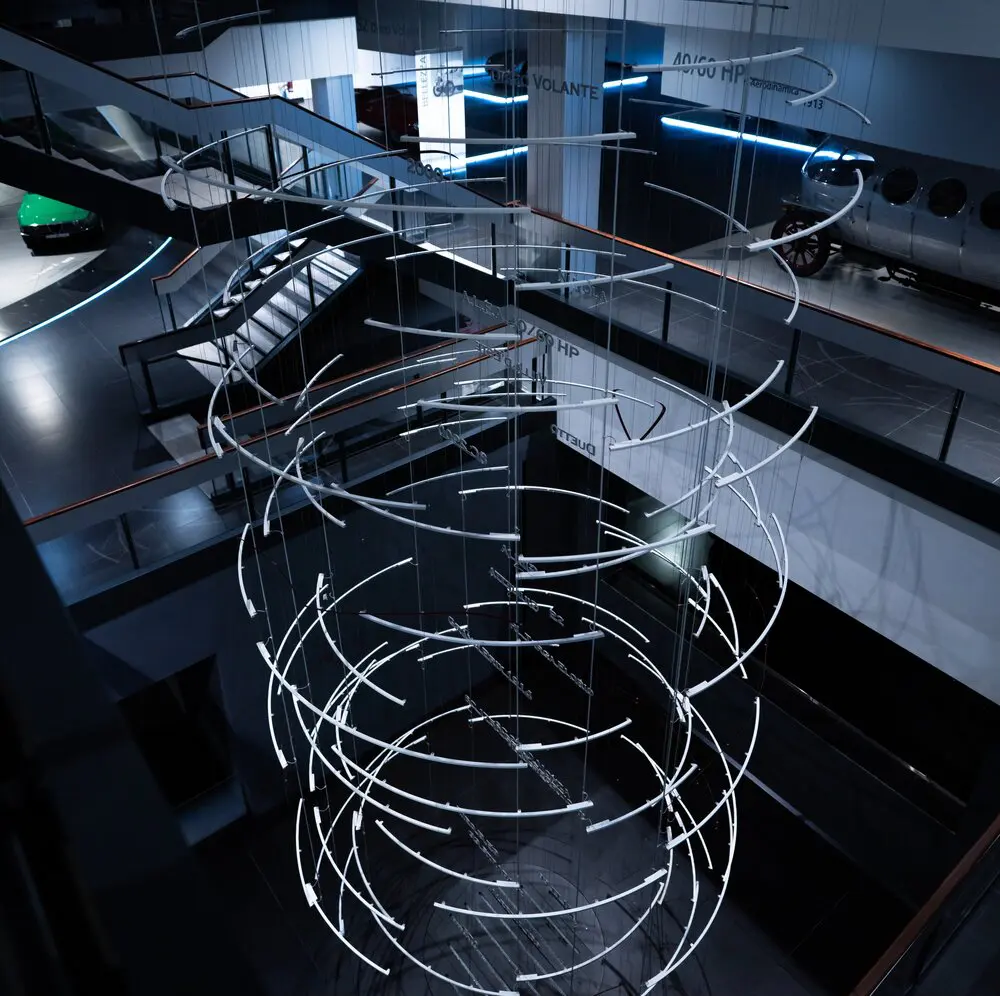
5. Archivi Storici Università Bocconi
Bocconi University, which was donated the Brustio-La Rinascente Archive by the Brustio family, holds many archival materials and photographs that provide insights into the lighting of large department stores.
These range from Cesare Brustio’s travel report to America in 1948, with photographs, drawings, and descriptions taken from the major American stores, to details about the lighting of the La Rinascente headquarters in Piazza Duomo, which was reconstructed in the years immediately following the war, drawing inspiration from the latest trends observed overseas.
The selected documents and photographs for Museo Segreto reveal the importance of light as a fundamental element in benchmarking for the new Rinascente to be restructured and rebuilt in Milan after the war bombings, and in general to enhance interior spaces and display products innovatively.

6. Villa Necchi Campiglio – FAI
Floor lamp – Lampada da terra – made of Murano glass in shades of blue, with a circular base and a cup-shaped bell lampshade. The lamp is characterized by a double-tapered stem, consisting of two twisted ribbed truncated cone elements, joined by a metal band.
This artwork, listed in the Venini catalogs, is extremely rare as no identical examples are known. The lamp, currently exhibited in the Stanza del Principe, now dedicated to the Guido Sforni Collection, is linked to the activity of the architect for the Necchi Campiglio family, which began in 1938 and continued after the Second World War throughout the 1950s.

7. MUDEC – Museo delle Culture
“Il significato è nel gioco” (The meaning is in the game) is an unpublished artwork created by Amalia Del Ponte (1936) for the exhibition “Rainbow. Colori e meraviglie tra miti, arti e scienza” at the Focus halls of the Mudec.
The work relates to the artist’s research on light conducted from 1964 to 1973, with transparent sculptures and the Tropi series. The ability of this large prism to capture light and transmit it, changing its form, works in relation to the surrounding environment.
As the artist explains: “the meaning is in the game, or action of light, if it is not evanescent it is not alive, like in schizophrenia, all things lose their boundaries, become iridescent with multicolored meanings, not things but an iridescence, a rainbow effect. An indirect reflection, or refraction, broken light or enigma.”

8. Fondazione Stelline
Loto is a site-specific installation, created and acquired in 2009 following the selection of the International Competition announced by Rete Musei Lombardia per l’Arte Contemporanea in collaboration with Regione Lombardia for the “TWISTER” project.
The full light optical fibers were shaped by Mario Airò into geometric and fluid signs in order to build a spatial dimension that tends to integrate with the architectural features of the place that hosted the work for several years: a lobed and vaguely vegetable and incomplete shape that, thanks to its ability to contain indeterminacy, appeared “natural”, still in formation.
Arranged along the perimeter of a regular hexagon, the tubular and flexible lines of light of Loto had the intrinsic quality of generating “sign”, as their natural flexible movement and expressiveness that emerged from the choice of letting them “run” without stiffening them into a scheme were respected.
Tubular lines of light designed a lobed and vaguely vegetable and incomplete shape, which appeared “natural” and still in formation, and then fell from above and flowed to the ground.
The presence of the Orti di Leonardo inside the headquarters of the Stelline Foundation, and the reference to the decoration for the Sala dell’Asse inside the Sforza Castle, are the underlying suggestions of a work of great poetic and formal cleanliness, where technique and thought – body and idea – merge in a rare balance.

Head to the official website of Milano MuseoCity to discover all the Museums involved and plan your visit, if in Milano!
[ Read also Your guide to the 10 best design museums in Milan and around ]





